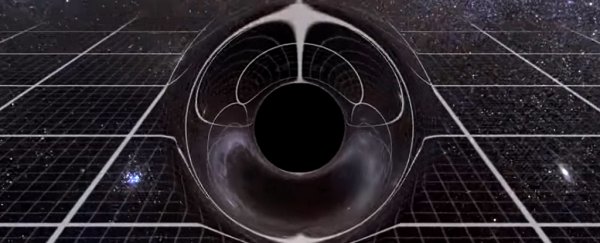This week, we took the first ever direct image of a black hole's event horizon.
It was a huge, science-altering event that didn't disappoint, with the image confirming Einstein's theory of relativity.
And it's even crazier when you put the sheer size of the M87 black hole into perspective.
If that's not enough to crush your mind, then this video from YouTuber morn1415 might do the trick.
The video above on the size of black holes starts out a little overly dramatic, but when you get down to the visual comparisons, holy crap, our poor, tiny brains. We were so unprepared.
The first thing you need to know is that any matter can become a black hole if it's crushed past its Schwarzchild radius.
For our Sun, that means it would need to be crushed down to the size of a small town in order to become a black hole.
And Earth would have to be squashed to roughly the size of a peanut.
That's pretty incredible to think about. But then consider how massive that makes the other black holes that we know of, like XTE J1650-500, which is around the size of Manhattan, but contains the mass of three or four of our Suns.
There are even more mid-sized black holes out there, like M82 X-1, which is crushed down to the size of Mars, and contains the mass of 1,000 Suns.
And we haven't even got started on supermassive black holes yet, which are found in the centre of pretty much every massive galaxy that we know of.
One of these black holes at the centre of the Phoenix galaxy has a mass of 20 billion Suns.
For perspective, the supermassive M87 black hole we imaged is around 6.5 billion times the mass of the Sun - so not quite as massive as that Phoenix black hole, but still ridiculously huge when you see it mapped out.
Even if you think you know, you don't. Trust us.
This article was updated from a story first published in November 2016.
